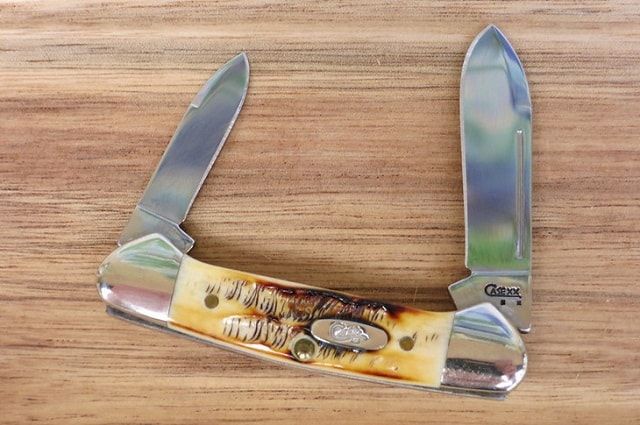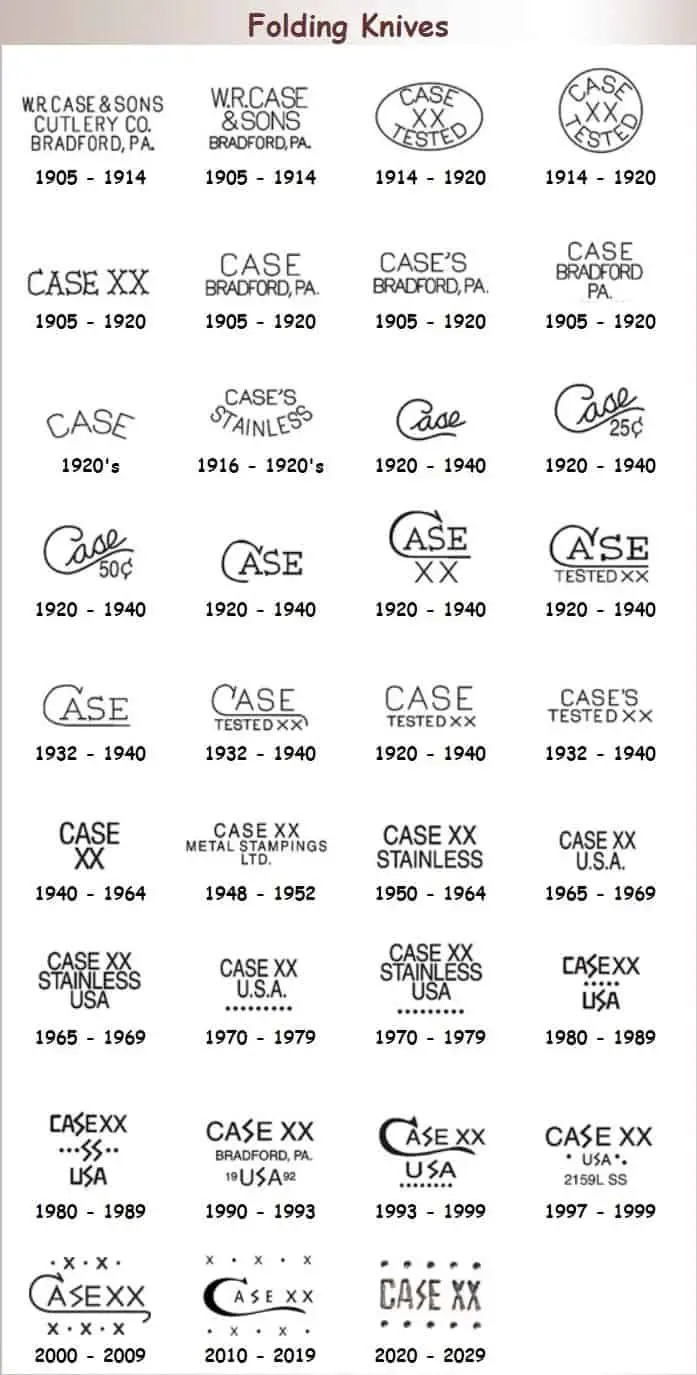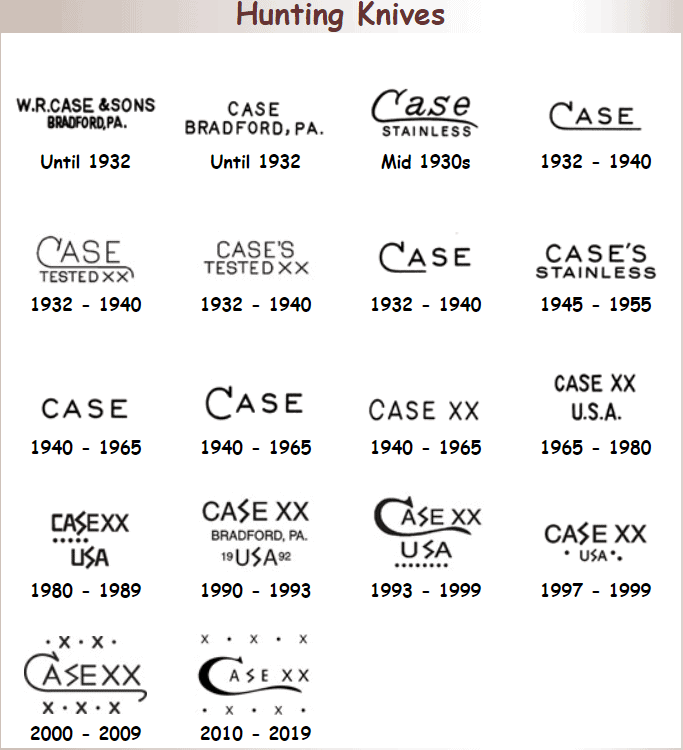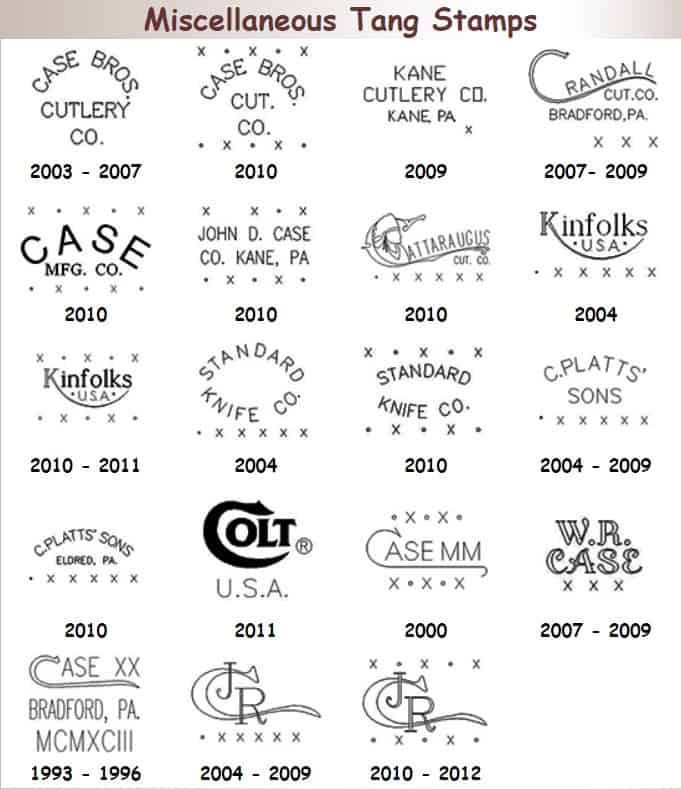(This site is reader-supported. When you buy something using retail links on our articles, we may earn a small commission. As an Amazon Associate I earn from qualifying purchases.)
I’ve always loved knives. I remember the first knife I ever bought, a Case pocketknife that my dad gave me when I was about 8 years old. It had an all-metal handle and had some elaborate decoration on it that made it really cool to carry around in elementary school (and got me into trouble with the nuns who thought they were too dangerous for kids). That little knife, shaped what has become a lifelong obsession with folding blades of every shape and size.
The historical context is important because you want to be able to date your Case knife! The company started out as one man’s dream in 1880, but by 1905 had grown into a family business where five generations of Case descendants are still running things today. And over those 125 years, there have been many other major milestones and innovations that deserve mention.
Dating a Case knife is not that difficult. You cannot rely just on the tang stamp to identify the age of a knife. While you will get some clues, some stamps were used over longer periods of time, making it hard to tell the precise year. Also, since there are many counterfeits out there, being aware of specific details about knives of different time periods is just as important.
How Old is my Case Knife?- Tang Stamps Help A lot!

Some tang stamps can be a bit confusing because they are relatively similar. Besides, some of them left the trends and came back years later. The tang stamp is a good indicator regarding the age of a knife. But then, there are times when you might need to go further with your search. Most stamps are used for more than just one year. Getting an age range will help you narrow the selection and figure out what kind of details to look for.
On the other hand, different Case knives come with different stamps. For example, two knives made in the same years might have slight differences in the stamp if they are built differently. While in general, all folding, hunting and select knives carry the same stamp representing the year range, there might be a few differences here and there. The tang stamp is the first thing to pay attention to.
The stamp saying W. R. Case & Sons Cutlery Co. Bradford, PA. over three different lines is associated with some of the first knives made by Case. Letters have the same size, and the stamp was used on folding knives made between 1905 and 1914. The same stamp – with the last line written in a lower font – is common for the same age range. Between 1914 and 1920, Case used a stamp saying Case XX Tested over three lines in a horizontal oval or a circle.
Case XX was used between 1905 and 1920. During the same years, Case used Case Bradford, PA. too, as well as Case’s Bradford, PA. and a few other variations – two or three lines. Knives made over the 1920s had a simple Case stamp – just the test in a round pattern. From 1916 to the 1920s, the tang stamp said Case’s Stainless over two lines, with the second line in a round design. Things evolved later on, and Case became a big fan of the handwritten font.
From 1920 to 1940, the knife was stamped with a simple handwritten font – Case only. A similar logo was used with 25¢ written in the bottom right corner. As the price went up, you will also see Case 50¢ too in the same type of design. You may also run into Case with a long C covering the A, as well as Case XX over two lines and Case Tested XX over two lines – both stamps feature a long and artistic C that covers the bottom side of the word.
A simple logo saying Case Tested XX over two lines was used from 1920 to 1940 too. From 1932, the logo says Case with an artistic C. The same logo also said Tested XX under the brand name in different models. Over the same years, Case has also changed the artistic C into a regular one – no fancy elements at all. Since this is a pretty long age range covering multiple tang stamps, you will most likely require further research.
Things changed a little after 1940, and Case dropped the fancy letters. Between 1940 and 1964, the logo said Case XX over two lines – simple, regular font. In 1948, the stamp said Case XX Metal Stampings Ltd. over three lines. The stamp was used until 1952. From 1950 to 1964, the stamp only said Case XX Stainless in two lines. Two stamps were used between 1965 and 1969 – Case XX U.S.A. (two lines) and Case XX Stainless USA (three lines).
Small details and extras kicked in after 1970. The stamps are identical to the ones used between 1965 and 1969, but they had a series of dots under the logo – nine dots. In 1980, the dots made it to the middle – five dots only. The top line said Case XX, while the bottom one said the USA. The font was regular, but the S in the stamp looked like a lightning bolt. This stamp was used until 1989. During the same age range, Case has also used SS between the dots – after the first three.
In 1990, the logo became a bit more sophisticated. It said Case XX on the first line, Bradford, PA. on the second line, and 19USA92 on the third line. This stamp only lasted until 1993, when it was taken over by another one until 1999 – Case XX USA over two lines and with a fancy long C, as well as eight dots. From 1997 to 1999, Case XX on the first line, USA between three dots on the second one, and a code on the third one.
Case has normalized its tang stamps over the past few decades and stuck to a single option for about a decade. From 2000 to 2009, the logo included Case XX with a long C and a lightning bolt like S, two X letters above it with a dot on each side of the X, as well as three X letters below it with two dots between them. The logo has been continuously used for the respective decade, meaning any other stamp indicates a different time frame.
The same rule applies to knives made between 2010 and 2019. The tang stamp is relatively similar. If the X letters and dots were shorter than the Case XX words, the new stamp is more symmetrical. At the same time, there are three X letters and two dots on top and two X letters and three dots under the text. From 2020, Case has used a simpler stamp – Case XX with long letters and five dots below and above the actual text.
Here is a visual guide for fast dating a Case folding knife.
Here is a visual guide for fast dating a Case hunting knife.
Case XX Select knives
Case XX Select knives come with slightly different tang stamps. In 1998 and 1999, Case has used a round logo. It says XX in the middle, Case on top, and Select at the bottom – round text. There is a dot on each side. Between 2001 and 2003, the logo was easier to read – Case on the first line, Select on the bottom line, and XX in the middle, with larger fonts. One dot on each side of the XX word is large and visible.
Between 2002 and 2004, the stamp said Case with a handwritten font, XX on the bottom right, and Select with a regular font and capital letters under everything. In 2006, the stamp was even simpler – Select with a round text and XX with a regular font. A similar logo was used in 2007. Case XX was written with a round font and a line from each side of the text. The Select word was regular and straight. In 2008, the logo was round – Case Select as a circle and number 10 in the middle.
In 2010 and 2011, the logo went back to basics – pretty simple and straightforward. It says Case on the first line, Select on the second one, and XX on the last line. There are also two dots – one before XX and another one after.
Here is a visual guide of Case XX Select knife tang stamps.
These are by far the most popular tang stamps used by Case knives. If you are not sure how to date a Case knife, chances are you will find one of these logos on the tang. However, Case has also used a few miscellaneous logos used for particular collections. All in all, here is what you might be looking for if you are lucky enough to own such a knife:
- 2003 to 2007 – Case Bros. Cutlery Co. on three lines, with the first line round.
- 2009 – Kane Cutlery Co. Kane PA over three lines, with a small X in the bottom right corner.
- 2010 – Case Bros. Cut. Co. on three lines, with the first line round, three X letters and two dots on top and two X letters and three dots at the bottom.
- 2007 to 2009 – Randall Cut. Co. Bradford, Pa. with three X letters under it and a round line under Randall.
- 2010 – Case in a round line, MFG. CO. with a regular font, three X letters and two dots above, and two letters and three dots under.
- 2010 to 2011 – Kinfolks USA with the same X and dot pattern and two dots by USA.
Date Your Case Knives Without a Tang Stamp
Should you own an old Case knife, you can still find ways to date it, even if the tang stamp is faded and no longer visible.
First of all, try getting online. Join discussion forums and boards, post some pictures of your knife and provide access to as many details as possible, such as measurements. Chances are you will run into Case enthusiasts who may at least give you some rough ideas about the age range. You may also find some professionals – both online and offline – who can give you some hints.
Once you get a rough idea about the age range, it depends. If Case has produced the same knife over more years, telling the precise manufacturing year is almost impossible. If designs are different, it pays off trying to find some old catalogs, knife magazines, or guides from those times. You might be able to find such things in libraries, vintage shops, or even scanned, over the Internet.
Does the secret code mean anything?
Many Case knives come with small codes – usually, just four digits. They have nothing to do with the production year. They do mean something, but you will not get any details about the age. The first digit tells you the material the handle is made of. The second one will give you the number of blades. The last two digits underline the pattern number. You can also find codes starting with letters, such as I for ivory or EX for exotic.

For example, if you see code 1347, that means the handle is made of solid hardwoods (1), and the knife has three blades(3), and the pattern number is 47.
Conclusion
If you can see the tang stamp and it is clear, compare it with the stamps in the images. If you cannot see it, you will need to dig deeper, get in touch with knife professionals, go online and find other knife enthusiasts who may have some clues. If that doesn’t work get in touch with the company.

Hi, I am Jay. I am the creator of Knife Guides, your one-stop site for everything related to knives. I am a computer engineer by profession, knife aficionado by passion. Here I work with a group of people who’ve always had a passion for knives and blades. Over the years we’ve kind of become experts and decided to share our knowledge and ideas. I am also an avid hiker and enjoy offshore gamefishing.





